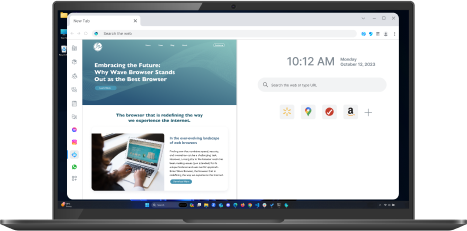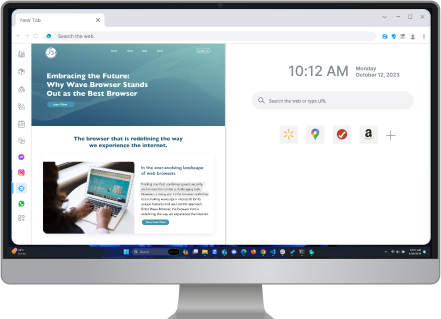Why is My Browser Not Working? Common Issues and Easy Fixes
Table of Contents

Browsers are essential tools for navigating the web, but sometimes they just don't work as expected. If you're wondering, "why is my browser not working" It could be due to issues like pages not loading, freezing, or crashing.
The good news is that there are several common reasons for browser problems, and in most cases, simple fixes can help get you back online quickly.
Why is My Browser Not Working?
Here’s a quick troubleshooting guide to help you understand why your browser isn't working and how to fix it:
1. Check Your Internet Connection
Before diving into the browser settings, ensure your internet connection is stable.A weak or disconnected network can slow down your browser and prevent it from loading pages. Try opening a different website or use another device to verify if your connection is the issue.
2. Clear Cache and Cookies to Optimize Your Browsing Performance
Browsers store temporary data like cache and cookies to speed up loading times. However, accumulated data can sometimes cause performance issues. Clearing your browser's cache and cookies can help resolve issues like slow loading or display errors.
How to clear cache and cookies:
- Open your browser.
- Go to Settings.
- Find Privacy & Security or Clear Browsing Data.
- Select the options to clear cache and cookies.Restart your browser.
3. Update Your Browser
An outdated browser may have bugs or security vulnerabilities that can affect performance. Ensuring you're using the latest version of your browser can often fix issues and improve its overall speed and functionality.
How to update your browser:
- Open the browser settings.
- Look for an option like About or Check for updates.
- If an update is available, follow the instructions to install it.
The latest version of Chrome, for example, includes enhanced privacy settings and better compatibility with modern web technologies.
4. Disable Extensions or Add-ons
Browser extensions and add-ons can sometimes cause compatibility issues, slowing down or even freezing the screen. Try disabling them one by one to identify the culprit.
How to disable extensions:
- Open your browser’s Extensions or Add-ons section from the menu.
- Disable each extension and refresh your browser.
- If disabling an extension resolves the issue, consider removing or updating it.
This step-by-step guide is valid for most browsers, including Internet Explorer, Firefox, Wave, and Chrome Browser.
5. Use an Antivirus and Check for Malware
Malware or viruses can slow down or crash your browser. If you suspect your system is infected, running a full system scan using your antivirus software can make a huge difference. This will help detect and remove any harmful software affecting your performance.
6. Try a Different Browser or Device
Sometimes the issue may not be with your browser but with the website itself. If you’re facing issues on one browser, try opening the same site on a different browser or device to see if the unexpected behavior persists.
7. Reset Your Browser
If none of the above solutions work, try resetting your browser to its default settings. This will clear data, settings, extensions, and cache without affecting your browser history.
How to reset your browser:
- Go to the browser's Settings.
- Look for an option like Advanced Settings.
- Select Reset settings or Restore defaults.
- Restart your browser.
8. Check Your Computer’s Resources
Sometimes, your computer's CPU or memory usage can affect browser performance. Close any unnecessary apps or browser tabs and monitor your system’s performance. If your operating system is running slow or your computer is low on memory, consider upgrading your hardware, enabling hardware acceleration, or closing unused applications.
9. Review Proxy and Firewall Settings
If you're using a VPN, proxy, or firewall, they could be interfering the ability to access websites. Try disabling these temporarily to see if the issue is resolved.
Is There a Difference in Troubleshooting Steps Between Different Browsers?

Yes, troubleshooting steps can vary between popular web browsers, such as Google Chrome, Safari, Firefox, and Mac, due to their unique settings and configurations. For example, clearing cache and cookies is a common fix, but the steps to access these settings can differ. Research on Google or YouTube for specific troubleshooting guides and tailored solutions.
If you're wondering why is my browser not working, don’t panic. By testing these simple troubleshooting steps, you can often resolve the issue quickly and get back to browsing without further frustration. Regular updates, proper browser management, and system maintenance can help ensure your performs smoothly.
If the problem persists despite these efforts, it may be worth reaching out to customer support or considering a reinstall of the browser.
Surf with Ease, Speed, and Security!

Download Wave Browser for a seamless online experience like never before. Try it now!



























